Name Antonio Meucci | Role Inventor | |
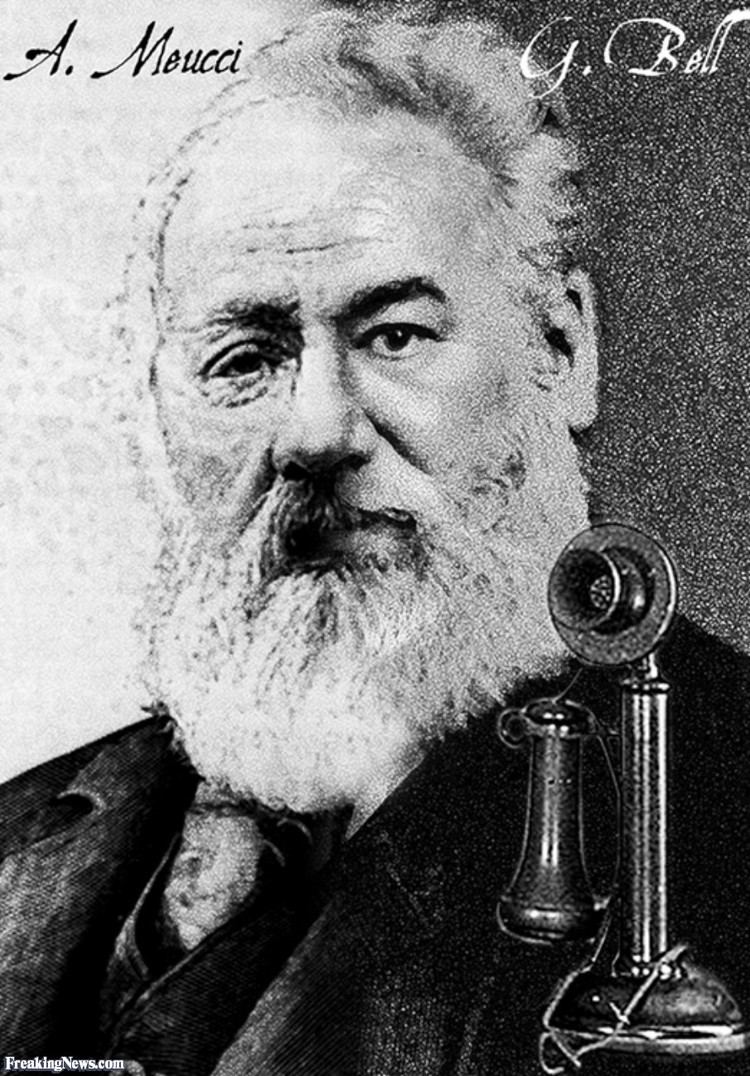 | ||
Alma mater Accademia di Belle ArtiFlorence, Italy Known for Inventing a telephone-like device, innovator, businessman, supporter of Italian unification Education Accademia di Belle Arti di Firenze Parents Amatis Meucci, Domenica Pepi Similar People | ||
Antonio meucci the original inventor of the telephone
Antonio Santi Giuseppe Meucci ([anˈtɔːnjo meˈuttʃi]; 13 April 1808 – 18 October 1889) was an Italian inventor and an associate of Giuseppe Garibaldi. Meucci is best known for developing a voice-communication apparatus that several sources credit as the first telephone.
Contents
- Antonio meucci the original inventor of the telephone
- Antonio meucci the true inventor of the telephone
- Early life
- Havana Cuba
- Move to Staten Island New York
- Electromagnetic telephone
- Bankruptcy
- Patent caveat
- Analysis of Meuccis caveat
- Conflicting opinions of Meucci biographers
- Telettrofono Company
- Death
- Invention of the telephone
- 2002 congressional resolution
- GaribaldiMeucci Museum
- Other inventions
- Patents
- References
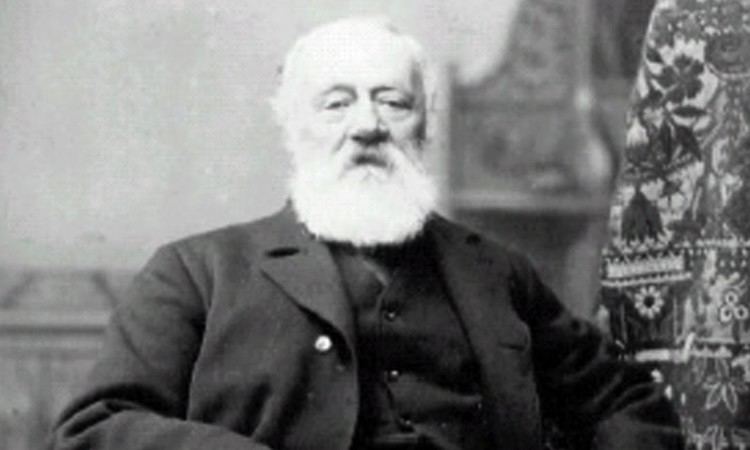
Meucci set up a form of voice-communication link in his Staten Island, New York, home that connected the second-floor bedroom to his laboratory. He submitted a patent caveat for his telephonic device to the U.S. Patent Office in 1871, but there was no mention of electromagnetic transmission of vocal sound in his caveat. In 1876, Alexander Graham Bell was granted a patent for the electromagnetic transmission of vocal sound by undulatory electric current. Despite this, the Italian government honors him with the title "Inventore ufficiale del telefono" or "Official inventor of the telephone".
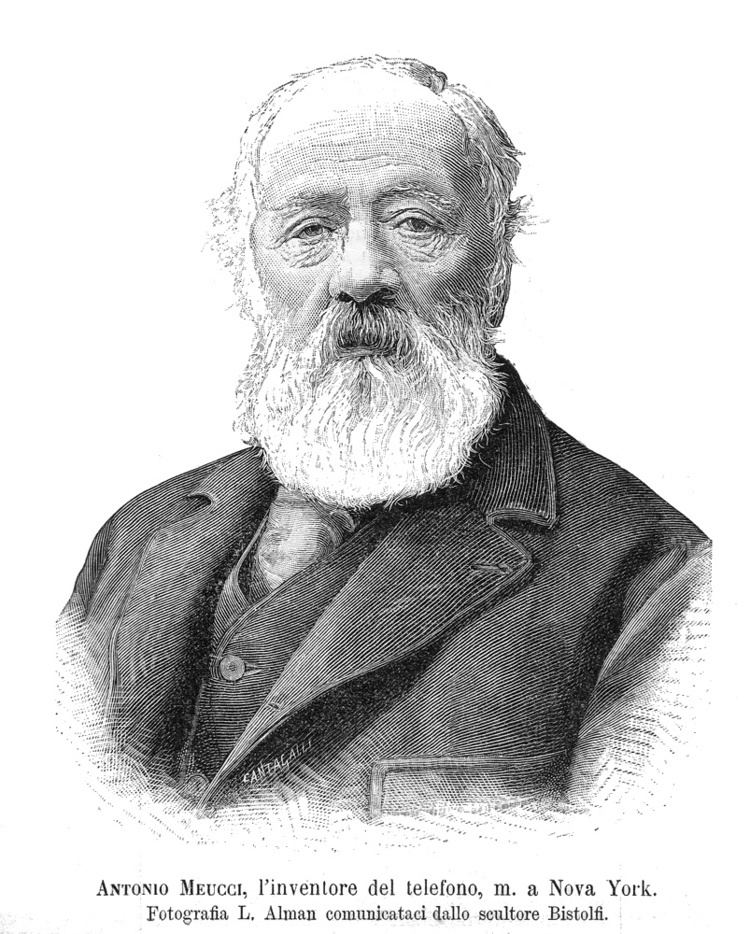
Antonio meucci the true inventor of the telephone
Early life

Meucci was born at Via dei Serragli 44 in the San Frediano borough of Florence, Grand Duchy of Tuscany (now in the Italian Republic), on 13 April 1808, as the first of nine children to Amatis Meucci and Domenica Pepi. Amatis was at times a government clerk and a member of the local police, and Domenica was principally a homemaker. Four of Meucci's siblings did not survive childhood.
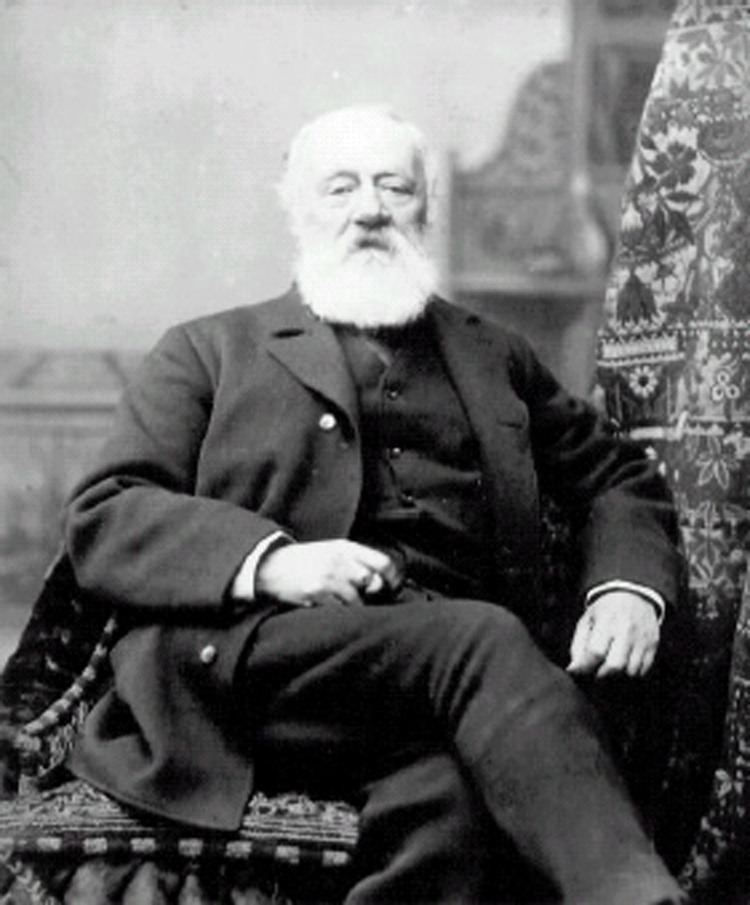
In November 1821, at the age of 15, he was admitted to Florence Academy of Fine Arts as its youngest student, where he studied chemical and mechanical engineering. He ceased full-time studies two years later due to insufficient funds, but continued studying part-time after obtaining employment as an assistant gatekeeper and customs official for the Florentine government. Meucci later became employed at the Teatro della Pergola in Florence as a stage technician, assisting Artemio Canovetti.
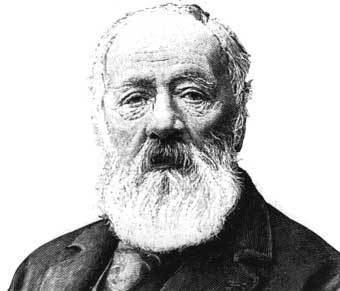
In 1834 Meucci constructed a type of acoustic telephone to communicate between the stage and control room at the Teatro della Pergola. This telephone was constructed on the principles of pipe-telephones used on ships and still functions. He married costume designer Esterre Mochi, who was employed in the same theatre, on 7 August 1834.
Havana, Cuba
In October 1835, Meucci and his wife emigrated to Cuba, then a Spanish province, where Meucci accepted a job at what was then called the Teatro Tacón in Havana (at the time, the greatest theater in the Americas). In Havana he constructed a system for water purification and reconstructed the Gran Teatro.
In 1848 his contract with the governor expired. Meucci was asked by a friend's doctors to work on Franz Anton Mesmer's therapy system on patients suffering from rheumatism. In 1849, he developed a popular method of using electric shocks to treat illness and subsequently experimentally developed a device through which one could hear inarticulate human voice. He called this device "telegrafo parlante" (lit. "talking telegraph").
In 1850, the third renewal of Meucci's contract with Don Francisco Martì y Torrens expired, and his friendship with General Giuseppe Garibaldi made him a suspect citizen in Cuba. On the other hand, the fame reached by Samuel F. B. Morse in the United States encouraged Meucci to make his living through inventions.
Move to Staten Island, New York
On 13 April 1850, Meucci and his wife emigrated to the United States, taking with them approximately 26,000 pesos fuertes in savings (approximately $500,000 in 2010 dollars), and settled in the Clifton area of Staten Island, New York.
The Meuccis would live there for the remainder of their lives. In Staten Island he helped several countrymen committed to the Italian unification movement and who had escaped political persecution. Meucci invested the substantial capital he had earned in Cuba in a tallow candle factory (the first of this kind in America) employing several Italian exiles. For two years Meucci hosted friends at his cottage, including General Giuseppe Garibaldi, and Colonel Paolo Bovi Campeggi, who arrived in New York two months after Meucci. They worked in Meucci's factory.
In 1854, Meucci's wife Ester became an invalid due to rheumatoid arthritis. Meucci continued his experiments.
Electromagnetic telephone
Meucci studied the principles of electromagnetic voice transmission for many years and was able to realize his dream of transmitting his voice through wires in 1856. He installed a telephone-like device within his house in order to communicate with his wife who was ill at the time. Some of Meucci's notes written in 1857 describe the basic principle of electromagnetic voice transmission or in other words, the telephone:
Consiste in un diaframma vibrante e in un magnete elettrizzato da un filo a spirale che lo avvolge. Vibrando, il diaframma altera la corrente del magnete. Queste alterazioni di corrente, trasmesse all'altro capo del filo, imprimono analoghe vibrazioni al diaframma ricevente e riproducono la parola.
Translated:
It consists of a vibrating diaphragm and an electrified magnet with a spiral wire that wraps around it. The vibrating diaphragm alters the current of the magnet. These alterations of current, transmitted to the other end of the wire, create analogous vibrations of the receiving diaphragm and reproduce the word.
Meucci devised an electromagnetic telephone as a way of connecting his second-floor bedroom to his basement laboratory, and thus being able to communicate with his wife. Between 1856 and 1870, Meucci developed more than 30 different kinds of telephones on the basis of this prototype. Around 1858, painter Nestore Corradi sketched Meucci's ideas; this drawing was used as the image on a stamp produced in 2003 by the Italian Postal and Telegraph Society.
Meucci intended to develop his prototype but did not have the financial means to keep his company afloat in order to finance his invention. His candle factory went bankrupt and Meucci was forced to unsuccessfully seek funds from rich Italian families. In 1860, he asked his friend Enrico Bandelari to look for Italian capitalists willing to finance his project. However, military expeditions led by Garibaldi in Italy had made the political situation in that country too unstable for anybody to invest. Meucci then published his invention in the New York Italian-language newspaper L'Eco d'Italia, although no copy of such reports have ever been located dating back to searches prior to his court case in the 1880s.
Bankruptcy
At the same time, Meucci was led to poverty by some fraudulent debtors. On 13 November 1861 his cottage was auctioned. The purchaser allowed the Meuccis to live in the cottage without paying rent, but Meucci's private finances dwindled and he soon had to live on public funds and by depending on his friends. As mentioned in William J. Wallace's ruling, during the years 1859, 1860, and 1861, Meucci was in close business and social relations with William E. Ryder, who was interested in his inventions, paid the expenses of his experiments, and invested money in Meucci's inventions. Their close working friendship continued until 1867.
In August 1870, Meucci reportedly was able to capture a transmission of articulated human voice at the distance of a mile by using a copper plate as a conductor, insulated by cotton. He called this device the "telettrofono". While he was recovering from injuries that befell him in a boiler explosion aboard a Staten Island ferry, the Westfield, Meucci's financial and health state was so bad that his wife sold his drawings and devices to a second-hand dealer to raise money.
Patent caveat
On 12 December 1871 Meucci set up an agreement with Angelo Zilio Grandi (Secretary of the Italian Consulate in New York), Angelo Antonio Tremeschin (entrepreneur), Sereno G.P. Breguglia Tremeschin (businessman), in order to constitute the Telettrofono Company. The constitution was notarized by Angelo Bertolino, a Notary Public of New York. Although their society funded him with $20, only $15 was needed to file for a full patent application. The caveat his lawyer submitted to the US Patent Office on 28 December 1871 was numbered 3335 and titled "Sound Telegraph". The following is the text of Meucci's caveat, omitting legal details of the Petition, Oath, and Jurat:
Analysis of Meucci's caveat
Meucci repeatedly focused on insulating the electrical conductor and even insulating the people communicating, but does not explain why this would be desirable. The mouth piece is like a "speaking trumpet" so that "the sound concentrated upon the wire" is communicated to the other person, but he does not say that the sound is converted to variable electrical conduction in the wire. "Another instrument is also applied to the ears," but he does not say that variable electrical conduction in the wire is to be converted to sound. In the third claim, he claims "a sound conductor which is also an electrical conductor, as a means of communication by sound" which is consistent with acoustic sound vibrations in the wire that somehow get transmitted better if electrical conductors such as a wire or metallic tube are used."
Meucci emphasizes that the conductors "for mouth and ears... must be metallic", but does not explain why this would be desirable. He mentions "communication with the ground" but does not suggest that a ground return must complete a circuit if only "the wire" (singular, not plural) is used between the sender's mouth piece and the receiver's ear piece, with one or the other person being electrically insulated from the ground by means of glass insulators ("...consists in isolating two persons... by placing them upon glass insulators; employing glass, for example, at the foot of the chair or bench on which each sits, and putting them in communication by means of a telegraph wire.").
Robert V. Bruce, a biographer of Bell, asserted that Meucci's caveat never became a patent and never could have become one because it never described an electric telephone.
Conflicting opinions of Meucci biographers
According to Robert V. Bruce, who gave his personal interpretation of Giovanni E. Schiavo's research, Meucci's own testimony as presented by Schiavo, would demonstrate that the Italian inventor did not understand the basic principles of the electric telephone, either before Bell invented it, or for several years after Bell invented it.
Other researchers have pointed to several biases, inconsistencies, and inaccuracies in Bruce's account of the invention of the telephone, firstly with the very name used by Meucci to describe his invention — Bruce referred to Meucci's device as a 'telephone', not as the 'telettrofono'. Bruce's reporting of Meucci's purported relationship with Dr. Seth R. Beckwith has been deemed inaccurate; Meucci and his legal representative had cautioned Beckwith against misusing Meucci's name for financial gain, vis-à-vis the company Beckwith founded in New Jersey.
Not only did Beckwith's Globe Telephone Co. base its claims against the Bell Telephone Company on Meucci's caveat, but the claims were also supported by approximately 30 affidavits, whereby it was stated that Meucci had repeatedly built and used different types of electric telephones several years before Bell did.
English historian William Aitken does not share Robert V. Bruce's viewpoint. Bruce had indirectly referred to Meucci as "the silliest and weakest impostor", while Aitken went so far as to define Meucci as the first creator of an electrical telephone.
Other recognition of Meucci's work in the past came from the International Telecommunication Union, positing that Meucci's work was one of the four precursors to Bell's telephone, as well as from the Smithsonian Institution, which listed Meucci as one of the eight most important inventors of the telephone in a 1976 exhibit.
Meucci and his business partners hired an attorney (J.D. Stetson), who filed a caveat on behalf of Meucci with the patent office. They had wanted to prepare a patent application, but the partners did not provide the $250 fee, so all that was prepared was a caveat, since the fee for that was only $20. However, the caveat did not contain a clear description of how the asserted invention would actually function. Meucci advocates claim the attorney erased margin notes Meucci had added to the document.
Telettrofono Company
In 1872, Meucci and his friend Angelo Bertolino went to Edward B. Grant, Vice President of American District Telegraph Co. of New York (not Western Union as commonly related), to ask for help. Meucci asked him for permission to test his telephone apparatus on the company's telegraph lines. He gave Grant a description of his prototype and a copy of his caveat. After waiting two years, Meucci went to Grant and asked for his documents back, but Grant allegedly told him they had been lost.
Around 1873, a man named Bill Carroll from Boston, who had news about Meucci's invention, asked him to construct a telephone for divers. This device should allow divers to communicate with people on the surface. In Meucci's drawing, this device is essentially an electromagnetic telephone encapsulated to be waterproof.
On 28 December 1874, Meucci's Telettrofono patent caveat expired. Critics dispute the claim that Meucci could not afford to file for a patent or renew his caveat, as he filed for and was granted full patents in 1872, 1873, 1875, and 1876, at the cost of $35 each, as well as one additional $10 patent caveat, all totaling $150, for inventions unrelated to the telephone.
After Bell secured his patents in 1876 and subsequent years, the Bell Telephone Company filed suit in court against the Globe Telephone Company (amongst many others) for patent infringement. Purportedly too poor to hire a legal team, Meucci was represent only by lawyer Joe Melli, an orphan whom Meucci treated as his own son. While American Bell Telephone Company v. Globe Telephone Company, Antonio Meucci, et al. was still proceeding, Bell also became involved with The U.S. Government v. American Bell Telephone Company, instigated by the Pan-Electric Telephone Company, which had secretly given the U.S. Attorney General 10% of its shares, employed him as a director, and then asked him to void Bell's patent. Had he succeeded in overturning Bell's patent, the U.S. Attorney General stood to become exceedingly rich by reason of his shares.
Meucci's telephone was said to be described in the L'Eco d'Italia newspaper of New York in the beginning of 1861, though no issues of the 1861–1863 period are available in the libraries of the United States. Meucci swore in court proceedings what he remembered writing in the newspaper. However, no other contemporary news reports prior to 1875 were ever located to validate Meucci's priority claims of an electromagnetic telephone.
The Havana experiments were briefly mentioned in a letter by Meucci, published by Il Commercio di Genova of 1 December 1865 and by L'Eco d'Italia of 21 October 1865 (both existing today).
An important pieces of evidence brought up in the trial was Meucci's Memorandum Book, which contained Meucci's noted drawings and records between 1862 and 1882. In the trial, Antonio Meucci was accused of having produced records after Bell's invention and back-dated them. As proof, the prosecutor brought forward the fact that the Rider&Clark company was founded only in 1863. At trial, Meucci said William E. Rider himself, one of the owners, had given him a copy of the memorandum book in 1862; however, Meucci was not believed.
On 13 January 1887, the United States Government moved to annul the patent issued to Bell on the grounds of fraud and misrepresentation. After a series of decisions and reversals, the Bell company won a decision in the Supreme Court, though a couple of the original claims from the lower court cases were left undecided. By the time that the trial wound its way through nine years of legal battles, the U.S. prosecuting attorney had died and the two Bell patents (No. 174,465 dated 7 March 1876 and No. 186,787 dated 30 January 1877) were no longer in effect, although the presiding judges agreed to continue the proceedings due to the case's importance as a "precedent."
With a change in administration and charges of conflict of interest (on both sides) arising from the original trial, the U.S. Attorney General dropped the lawsuit on 30 November 1897 leaving several issues undecided on the merits. During a deposition filed for the 1887 trial, Meucci claimed to have created the first working model of a telephone in Italy in 1834. In 1886, in the first of three cases in which he was involved, Meucci took the stand as a witness in the hopes of establishing his invention's priority. Meucci's evidence in this case was disputed due to lack of material evidence of his inventions as his working models were reportedly lost at the laboratory of American District Telegraph (ADT) of New York. ADT did not merge with Western Union to become its subsidiary until 1901.
Meucci's patent caveat had described a [tin can telephone|lover's telegraph]], which transmitted sound vibrations mechanically across a taut wire, a conclusion that was also noted in various reviews ("The court further held that the caveat of Meucci did not describe any elements of an electric speaking telephone…..", and "The court held that Meucci's device consisted of a mechanical telephone consisting of a mouthpiece and an earpiece connected by a wire, and that beyond this the invention of Meucci was only imagination.") Meucci's work, like many other inventors of the period, was based on earlier acoustic principles and despite evidence of earlier experiments, the final case involving Meucci was eventually dropped upon his death.
Death
Ester Meucci became increasingly frail and was invalided for approximately five years before dying in 1884. Meucci became ill in March 1889, and died on 18 October 1889 in Clifton, Staten Island, New York City.
Invention of the telephone
There has been much dispute over who deserves recognition as the first inventor of the telephone, although Bell was credited with being the first to transmit articulate speech by undulatory currents of electricity. The Federazione Italiana di Elettrotecnica has devoted a museum to Meucci making a chronology of his inventing the telephone and tracing the history of the two trials opposing Meucci and Bell. They support the claim that Antonio Meucci was the real inventor of the telephone. However, some scholars outside Italy do not recognize the claims that Meucci's device had any bearing on the development of the telephone. Tomas Farley also writes that, "Nearly every scholar agrees that Bell and Watson were the first to transmit intelligible speech by electrical means. Others transmitted a sound or a click or a buzz but our boys [Bell and Watson] were the first to transmit speech one could understand."
In 1834 Meucci constructed a kind of acoustic telephone as a way to communicate between the stage and control room at the theatre "Teatro della Pergola" in Florence. This telephone was constructed on the model of pipe-telephones on ships and is still functional.
In 1848 Meucci developed a popular method of using electric shocks to treat rheumatism. He used to give his patients two conductors linked to 60 Bunsen batteries and ending with a cork. He also kept two conductors linked to the same Bunsen batteries. He used to sit in his laboratory, while the Bunsen batteries were placed in a second room and his patients in a third room. In 1849 while providing a treatment to a patient with a 114V electrical discharge, in his laboratory Meucci is claimed to have heard his patient's scream through the piece of copper wire that was between them, from the conductors he was keeping near his ear. His intuition was that the "tongue" of copper wire vibrated just like a leave of an electroscope—which meantt there was an electrostatic effect. To continue the experiment without hurting his patient, Meucci covered the copper wire with a piece of paper. Through this device he claimed to hear an unarticulated human voice. He called this device "telegrafo parlante" (lit. "talking telegraph").
On the basis of this prototype, some claim Meucci worked on more than 30 kinds of telephones. In the beginning, he was inspired by the telegraph. Different from other pioneers of the telephone—such as Charles Bourseul, Philipp Reis, Innocenzo Manzetti, and others—he did not think about transmitting voice by using the principle of the telegraph key (in scientific jargon, the "make-and-break" method). Instead, he looked for a "continuous" solution, meaning one that didn't interrupt the electric flux. In 1856, Meucci reportedly constructed the first electromagnetic telephone, made of an electromagnet with a nucleus in the shape of a horseshoe bat, a diaphragm of animal skin, stiffened with potassium dichromate and a metal disk stuck in the middle. The instrument was housed in a cylindrical carton box. He purportedly constructed it to connect his second-floor bedroom to his basement laboratory, and thus communicate with his invalid wife.
Meucci separated the two directions of transmission to eliminate the so-called "local effect"—using what we would call today a four-wire-circuit. He constructed a simple calling system with a telegraphic manipulator that short-circuited the instrument of the calling person to make a succession of impulses (clicks) that were louder than normal conversation. Aware that his device required a bigger band than a telegraph, he found some means to avoid the so-called "skin effect" through superficial treatment of the conductor or by acting on the material (copper instead of iron).
In 1864, Meucci claimed to have made what he felt was his best device, using an iron diaphragm with optimized thickness and tightly clamped along its rim. The instrument was housed in a shaving-soap box, whose cover clamped the diaphragm. In August 1870, Meucci reportedly obtained transmission of articulate human voice at a mile distance by using as a conductor a copper wire insulated by cotton. He called his device "telettrofono". Drawings and notes by Antonio Meucci with a claimed date of 27 September 1870 show that Meucci understood inductive loading on long distance telephone lines 30 years before any other scientists. The question of whether Bell was the true inventor of the telephone is perhaps the single most litigated fact in U.S. history, and the Bell patents were defended in some 600 cases. Meucci was a defendant in American Bell Telephone Co. v. Globe Telephone Co. and others (the court’s findings, reported in 31 Fed. Rep. 729).
N. Herbert in his History of the Telephone said:
To bait the Bell Company became almost a national sport. Any sort of claimant, with any sort of wild tale of prior invention, could find a speculator to support him. On they came, a motley array, 'some in rags, some on nags, and some in velvet gowns.' One of them claimed to have done wonders with an iron hoop and a file in 1867; a second had a marvellous table with glass legs; a third swore that he had made a telephone in 1860, but did not know what it was until he saw Bell's patent; and a fourth told a vivid story of having heard a bullfrog croak via a telegraph wire which was strung into a certain cellar in Racine, in 1851.
Judge Wallace's ruling was bitterly regarded by historian Giovanni Schiavo as a miscarriage of justice.
2002 congressional resolution
In 2002, on the initiative of U.S. Representative Vito Fossella (R-NY), in cooperation with an Italian-American deputation, the U.S. House of Representatives passed United States HRes. 269 on Antonio Meucci stating "that the life and achievements of Antonio Meucci should be recognized, and his work in the invention of the telephone should be acknowledged." Within its preamble it stated that: "if Meucci had been able to pay the $10 fee to maintain the caveat after 1874, no patent could have been issued to Bell." The resolution's sponsor described it as "a message that rings loud and clear recognizing the true inventor of the telephone, Antonio Meucci."
In 2002 some news articles reported: "the resolution said his "telettrofono", demonstrated in New York in 1860, made him the inventor of the telephone in the place of Bell, who took out a patent 16 years later."
A similar resolution was introduced to the U.S. Senate but no vote was held on the resolution.
Despite the House of Representatives resolution, its interpretation as supporting Meucci's claim as the inventor of the telephone remains disputed.
The Government of Canada responded ten days later by unanimously passing a parliamentary motion stating that Alexander Graham Bell was the inventor of the telephone.
Others, believe House Resolution 269 redressed a historic injustice, and the Italian newspaper La Repubblica hailed the vote to recognise Meucci as a belated comeuppance for Bell.
Garibaldi–Meucci Museum
The Order of the Sons of Italy in America maintains a Garibaldi–Meucci Museum on Staten Island. The museum is located in a house that was built in 1840, purchased by Meucci in 1850, and rented to Giuseppe Garibaldi from 1850 to 1854. Exhibits include Meucci’s models and drawing and pictures relating to his life.
Other inventions
This list is also taken from Basilio Catania's historical reconstruction
Patents
US patent images in TIFF format
